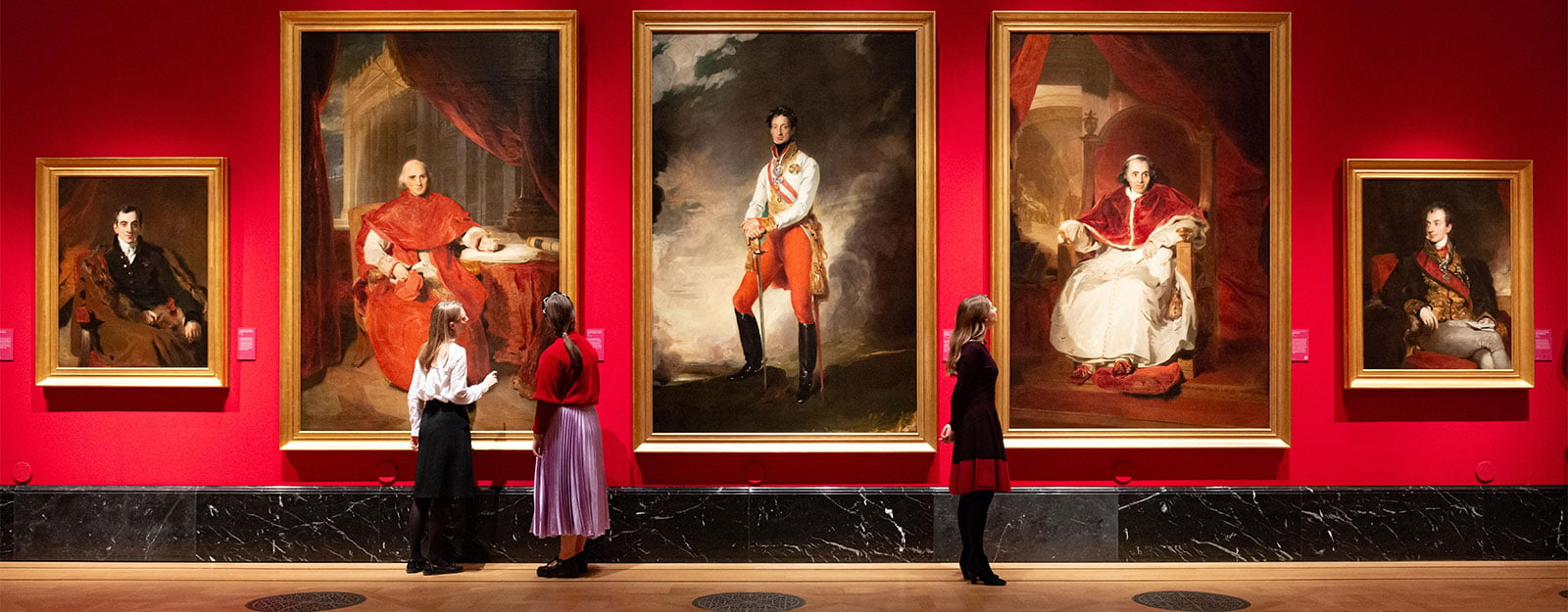
Learn more about the Royal Collection, one of the most important art collections in the world.
Miniatures in the Royal Collection
The 3,000 miniatures in the Royal Collection constitute one of the largest groups of such works in existence. The collection spans four centuries and includes examples by the greatest practitioners – François Clouet, Hans Holbein the Younger, Nicholas Hilliard, Isaac Oliver, Samuel Cooper, Jeremiah Meyer, Richard Cosway and Sir William Ross. The development of the miniature as an art form, from its origins in the early 16th century to its slow decline in the 19th, can be traced through examples in the Royal Collection.
History
Miniaturists held official positions at court, and during the earlier centuries their work often directly reflected the circumstances, interests and even the character of the sovereign. At the time of the Civil War (1642-9) and its aftermath leading up to the Restoration (1660) and the Glorious Revolution (1688), the livelihoods of such artists as John Hoskins, Samuel Cooper, Alexander Cooper, Richard Gibson, David des Granges, Nathaniel Thach, Thomas Flatman and Nicholas Dixon were undoubtedly affected by shifting political alliances and religious affiliations.
The Tudors were the first collectors of miniatures. Henry VIII owned examples by Lucas Hornebolte and Hans Holbein the Younger. Charles I had some 80 miniatures in the Cabinet Room in the Privy Gallery at Whitehall Palace. Following the dispersal of this collection, less than half were reacquired by or returned to his son, Charles II, after the Restoration. The Hanoverians George I and George II appointed able miniaturists, such as Lens, Boit and Christian Frederick Zincke, and the reign of George III witnessed a resurgence of the miniaturist’s art at court through artists such as Meyer, Smart and Cosway. The Prince of Wales, the future George IV, commissioned and acquired numerous works from miniaturists and enamellists, most famously from Richard Cosway.
During Queen Victoria’s reign the patronage of miniaturists continued, and artists such as Sir William Ross and Robert Thuburn were prominent. By now the miniature as an art form was beginning to give way before the development of photography. Queen Victoria’s interest in miniatures was nurtured by her passion for family and dynastic history. Her consort, Prince Albert, designed a special cabinet with sliding drawers for the storage of the collection, which was at the same time given new frames of a uniform pattern.
During the present reign The Queen has purchased miniatures of considerable significance, including a portrait of the architect Hugh May by Samuel Cooper and a portrait of Queen Henrietta Maria by John Hoskins, once in the collection of Charles I.




